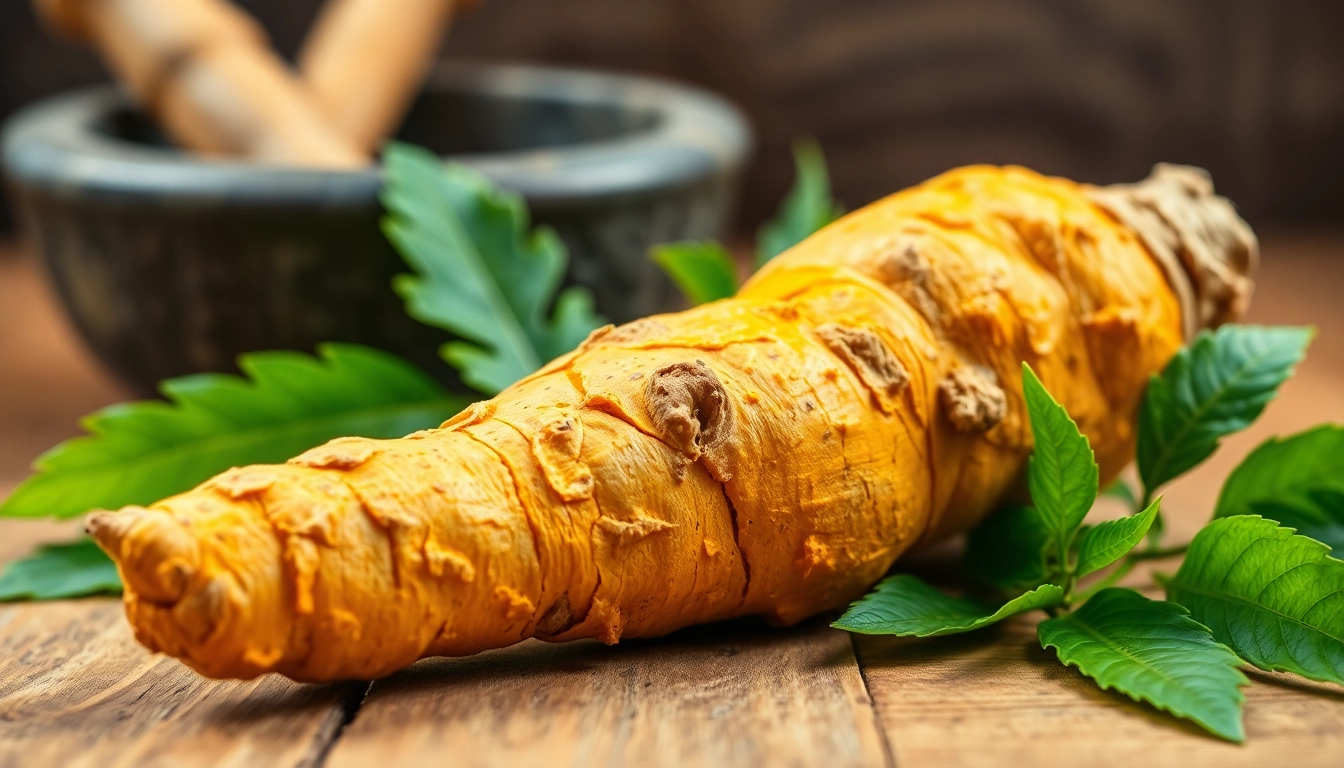The Nutritional Profile of Turmeric Root
Essential Nutrients and Compounds
Turmeric root, scientifically known as Curcuma longa, is renowned not just for its vibrant golden hue but also for its rich nutritional profile. This rhizome is packed with bioactive compounds, particularly curcumin, which is responsible for many of its health benefits. Apart from curcumin, turmeric root contains various essential nutrients including vitamins (such as Vitamin C and Vitamin E), minerals (including potassium, magnesium, and iron), and dietary fiber. Additionally, the root is noted for its antioxidant and anti-inflammatory properties, making it a staple in both culinary and medicinal practices.
Caloric Content and Dietary Considerations
Despite its potent properties, turmeric root is low in calories, with approximately 25 calories per tablespoon of fresh root. This low caloric content makes it a favorable addition to numerous dishes, allowing for enhanced flavor and health benefits without significant contributions to caloric intake. Furthermore, turmeric is compatible with various dietary needs and can be incorporated into vegetarian, vegan, or gluten-free diets, emphasizing its versatility and appeal across diverse populations.
Comparative Analysis with Other Roots
When compared to other common roots such as ginger and garlic, turmeric holds its unique position not only in flavor but in health benefits as well. While ginger is primarily recognized for its gastrointestinal benefits, turmeric excels in anti-inflammatory and antioxidant capacities largely due to its high curcumin content. In contrast, garlic is widely acclaimed for its cardiovascular advantages. Each root has its strengths, but turmeric stands out for its holistic health benefits, particularly in traditional medicine contexts.
Health Benefits of Turmeric Root
Anti-inflammatory Properties and Pain Relief
Turmeric root has gained unprecedented popularity in recent years, largely due to its remarkable anti-inflammatory properties attributed to curcumin. Research indicates that curcumin can inhibit various molecules that play significant roles in inflammation, making it beneficial for conditions such as arthritis, muscle soreness, and general chronic pain. A review published in the Harvard Health journal emphasizes its effectiveness in reducing symptoms linked to these conditions. Regular consumption of turmeric can offer a natural alternative to over-the-counter pain relief medications.
Antioxidant Effects on Health and Aging
Oxidative stress is a significant contributor to aging and the onset of various age-related diseases. Curcumin exhibits potent antioxidant properties that help neutralize free radicals, effectively protecting cells from damage. Studies suggest that consistent intake of turmeric root may reduce the risk of neurodegenerative diseases such as Alzheimer’s. By combating oxidative stress, turmeric not only helps with signs of aging but supports overall cellular health.
Potential Benefits Against Chronic Diseases
Extensive research has explored the therapeutic potential of turmeric root against a multitude of chronic diseases. Evidence suggests that its anti-inflammatory and antioxidant properties may diminish the risk of heart disease, diabetes, and certain cancers. A 2020 clinical study indicated that curcumin significantly inhibits tumor growth in various types of cancer, although more research is required to determine appropriate dosages and long-term effects. These findings position turmeric as a complementary approach in managing chronic diseases, but it should not replace conventional treatments.
Culinary Applications of Turmeric Root
How to Prepare and Cook with Fresh Turmeric
Incorporating fresh turmeric root into your diet is simple and rewarding. To prepare turmeric, start by peeling the skin, which can be done using a vegetable peeler or the edge of a spoon. Once peeled, turmeric can be grated, diced, or minced according to the application. It pairs beautifully with garlic, ginger, and even citrus flavors. A common method is to sauté it in oil to release its flavors before adding it to dishes like curries, soups, and stir-fries.
Popular Recipes Featuring Turmeric Root
Turmeric root shines in an array of delicious recipes. For instance, a turmeric ginger tea can be created by boiling fresh turmeric and ginger slices in water, sweetened with honey or lemon. Another popular dish is a turmeric-infused rice, where the root is added to the cooking water for an aromatic and visually appealing side. Smoothies are also a great way to include turmeric; blending it with bananas, spinach, and a splash of almond milk can offer a nutritious start to your day.
Pairs and Contrasts: Flavor Profiles
The warm, slightly bitter flavor of turmeric root pairs excellently with spicy, earthy ingredients such as black pepper, ginger, and chili. It complements savory dishes, particularly those influenced by Indian and Middle Eastern cuisines. When combined with black pepper, the absorption of curcumin is significantly enhanced, highlighting the importance of food pairings in maximizing health benefits. Experimentation with turmeric can also yield surprising results in sweet applications, such as golden milk or turmeric cakes.
Purchasing and Storing Turmeric Root
Choosing Quality Turmeric Root
When selecting turmeric root, look for firm, unblemished pieces with a vibrant orange color, which indicates high curcumin content. Organic turmeric root is preferable as it is free from pesticides and chemicals. It can be found in various forms including fresh, dried, and powdered, but fresh turmeric tends to have a more robust flavor and higher nutritional value.
Storage Tips for Freshness and Flavor
To maintain the freshness of turmeric root, store it in a cool, dark place, preferably wrapped in a paper towel and placed in a zip-lock bag in the refrigerator. Properly stored, fresh turmeric can last for up to two weeks. Dried turmeric powder should be kept in a sealed container, away from light and moisture, where it can retain flavor for several months.
Where to Buy Turmeric Root: Online and Stores
Turmeric root can be purchased at grocery stores, health food stores, and online. Leading retailers such as Whole Foods, Sprouts Farmers Market, and various organic marketplaces offer high-quality options. Online platforms also allow you to explore diverse varieties, including specialty and organic selections, making it easy to integrate turmeric into your culinary routine.
Potential Side Effects and Considerations
Common Side Effects of Turmeric Consumption
Despite its numerous health benefits, turmeric root can have side effects if consumed in excessive amounts. Common issues include gastrointestinal discomfort, such as bloating and upset stomach. Allergic reactions can occur in some individuals, particularly if they have a known sensitivity to ginger family members.
Interactions with Medications and Health Conditions
Turmeric may interact with certain medications, particularly blood thinners and medications for diabetes. It is crucial to consult with a healthcare provider before introducing significant amounts of turmeric into your diet, especially if you are pregnant, nursing, or undergoing specific treatments.
Best Practices for Daily Intake
The recommended daily intake of turmeric for health benefits varies, with some studies suggesting around 500 to 2000 mg of curcumin per day for therapeutic effects. For general wellness, seasoning meals with turmeric in moderation may suffice. Consider incorporating turmeric dishes into your diet a few times a week, balancing it with other nutrients for optimal health.



